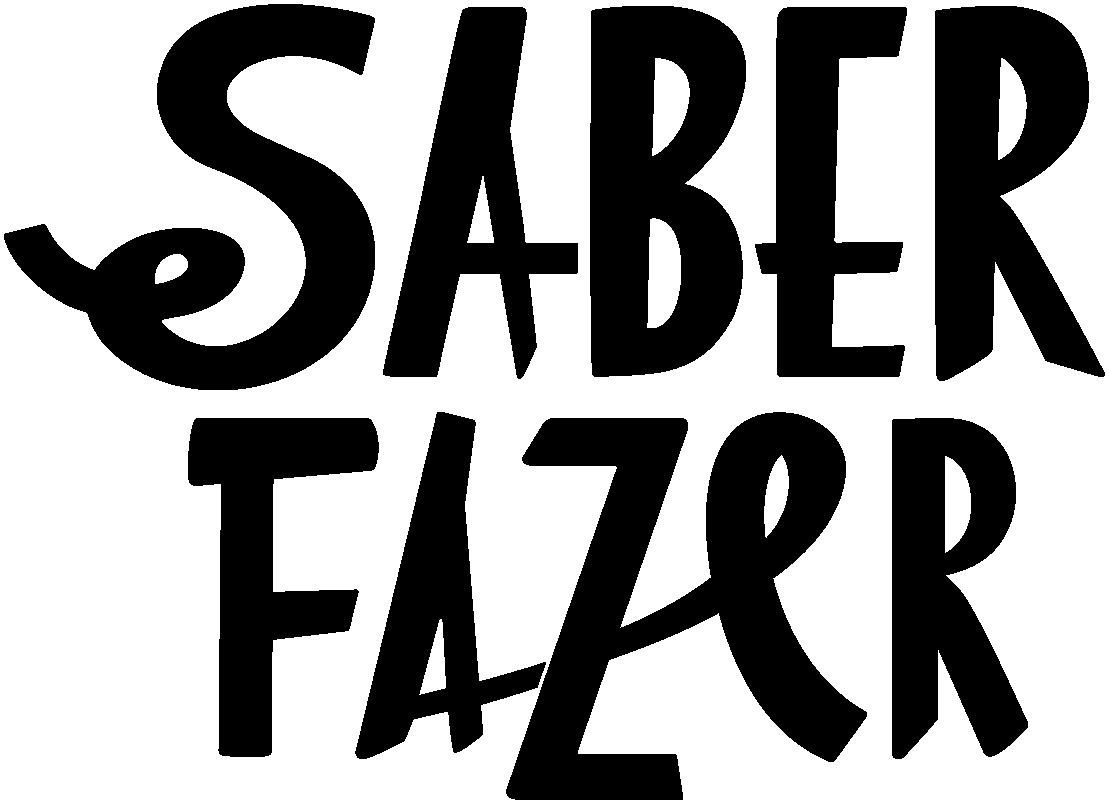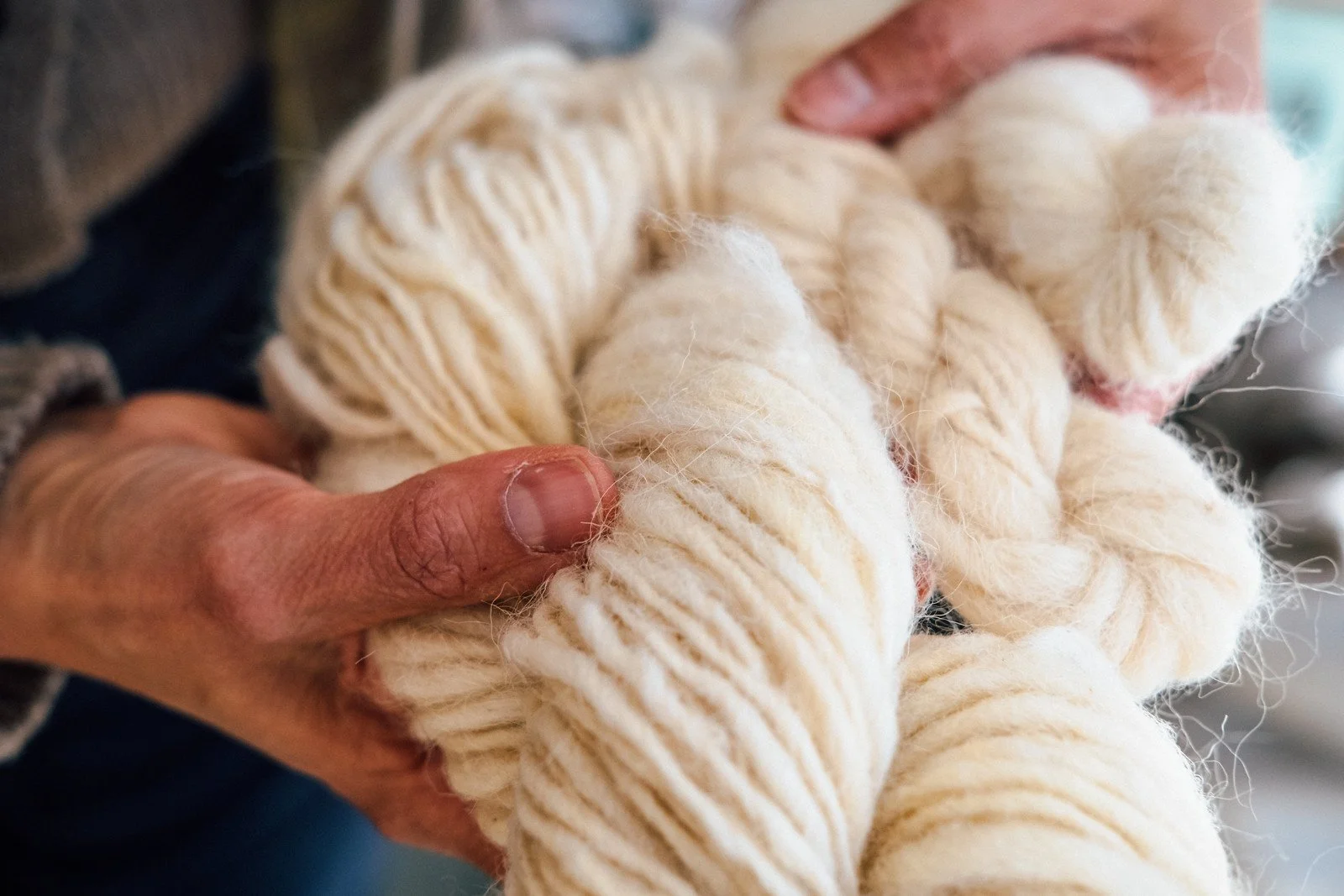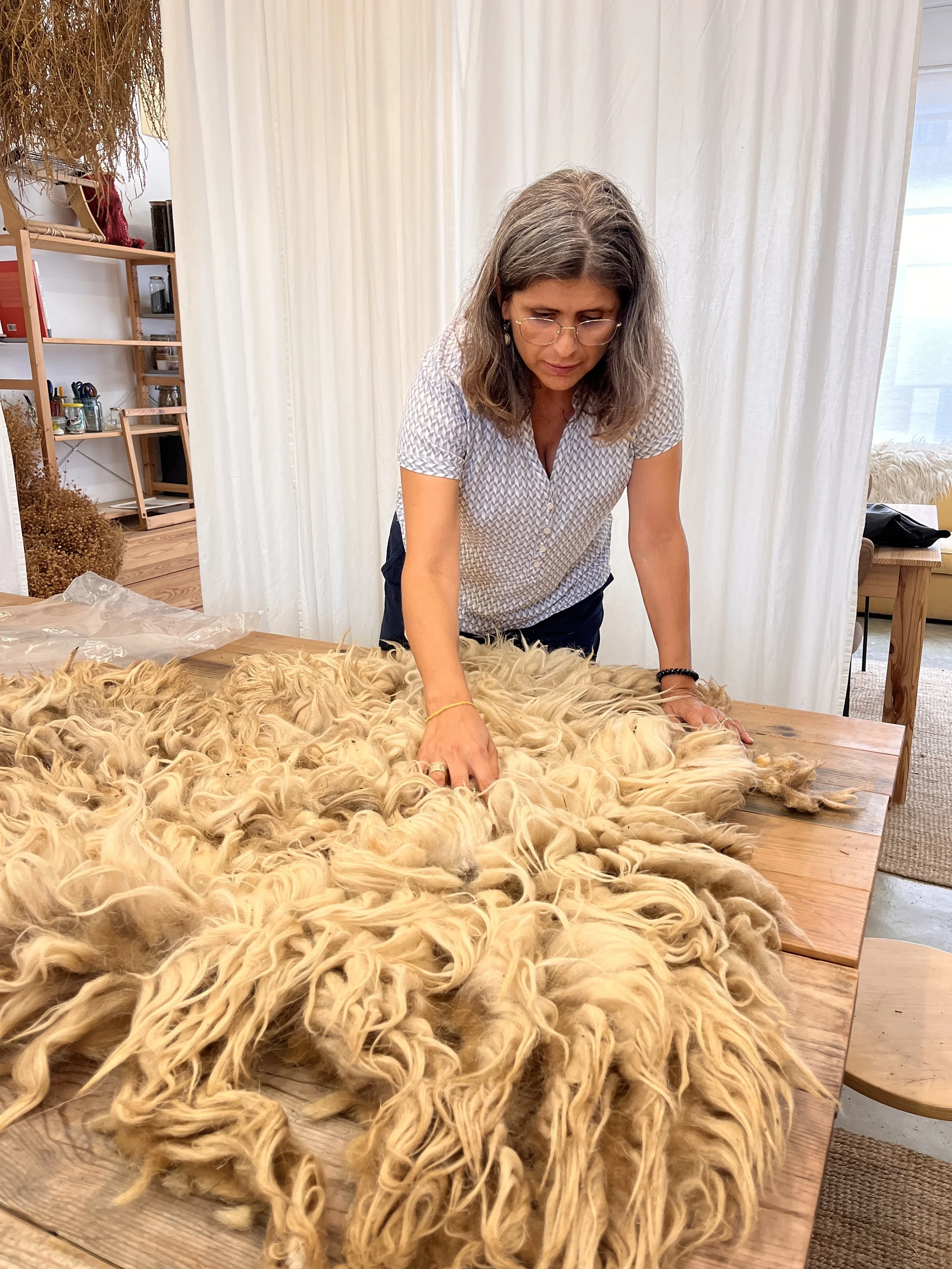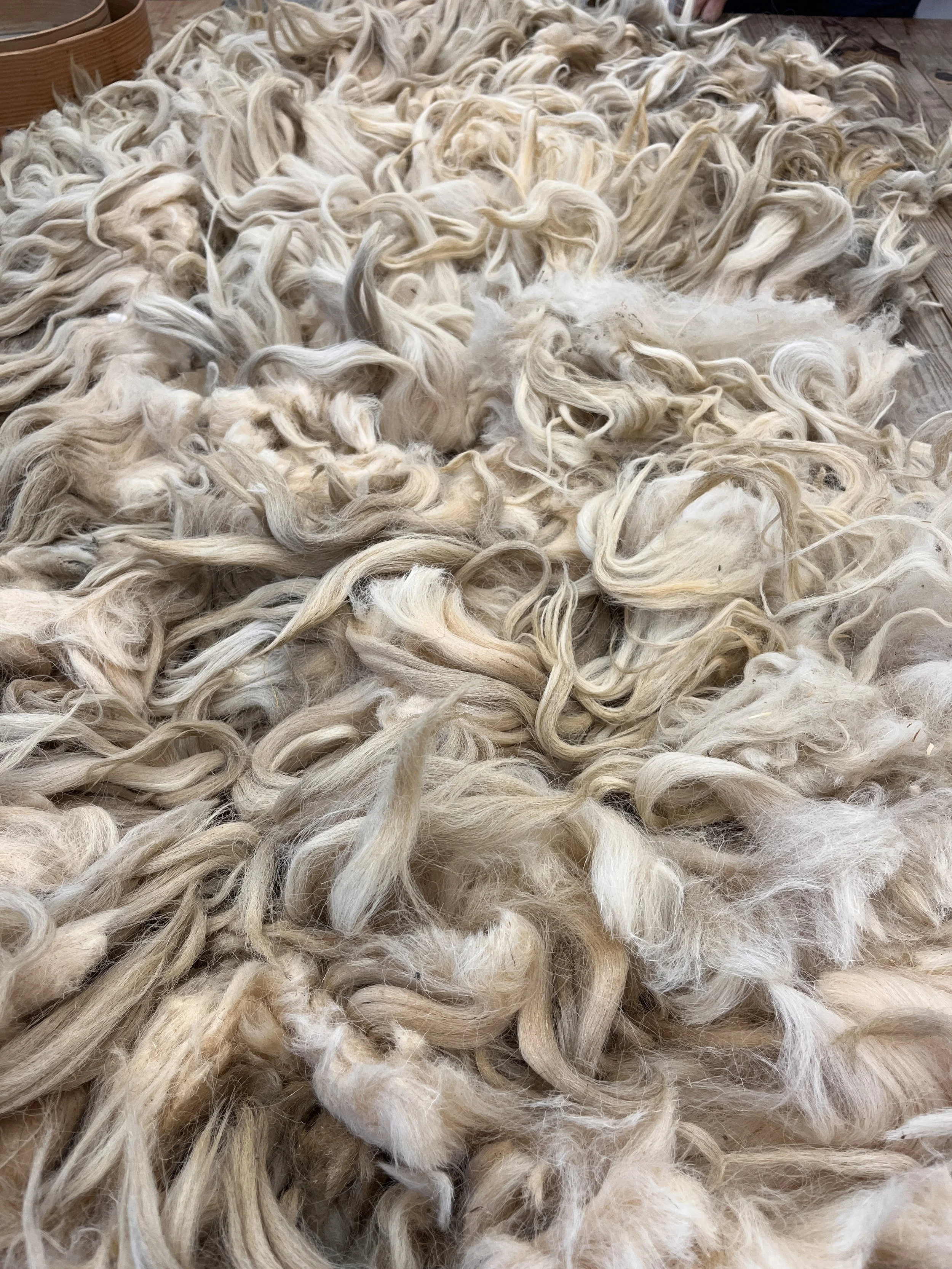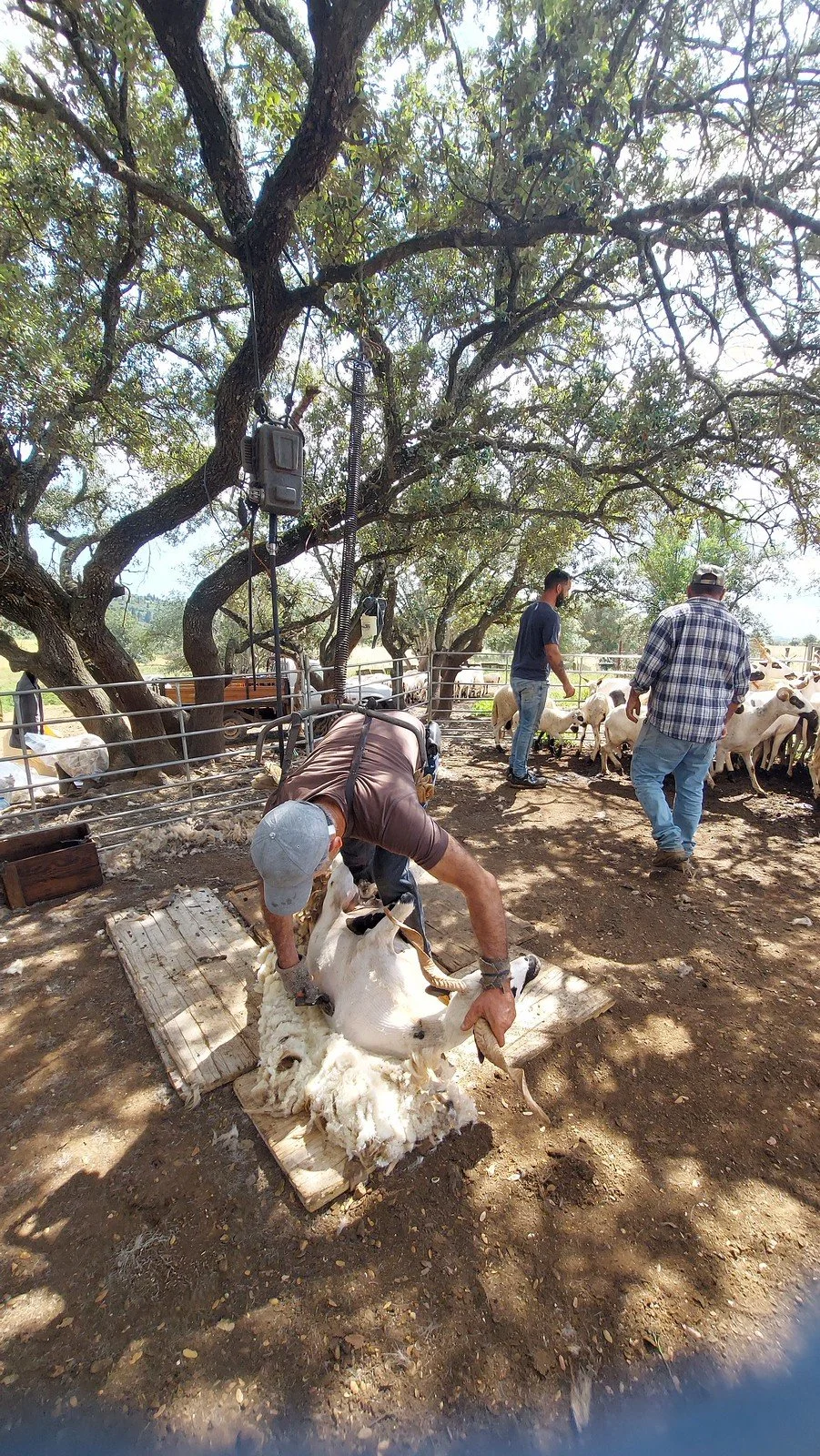For the Churra Algarvia sheep breed
Carolina here at Saber Fazer showed us some pieces made with Churra Algarvia wool. Tapestry by Gudrum Robinson and scarf by Paula Neves.
The outlook for Portuguese wool is not great, as we know, but every now and then we can see the light at the end of the tunnel when we learn that more and more initiatives are being organised to promote local wool. One such organisation is Algarchurra, an association founded by Rita Guerreiro back in 2012 that has been conducting research and promoting the Churra Algarvia sheep and, of course, its wool.
In 2022, Carolina Sousa (pictured), who has been collaborating with Algarchurra for years, came to attend our Wool Working Course, precisely to gain more skills in working with Algarve Churra wool.
A year later, we had the pleasure of welcoming her back, but this time to take the Weaving Course with Guida Fonseca, and she brought us some examples of yarns and items produced from the wool of this breed!
We have kept in touch ever since, and a few weeks ago Carolina brought us some beautiful samples of Churra Algarvia fleece to add to our large archive of Portuguese wools, which we use for research and in our training courses.
Yarn spun from Churra Algarvia wool
One of the Churra Algarvia wool fleeces that Carolina brought us in September
One of the Churra Algarvia wool fleeces that Carolina brought us in September
In the field, Algarchurra faces the challenges we already know too well. A breed with potential, but one that is undervalued, especially in terms of wool, which is currently considered a by-product, and shearing, which is a burden for producers.
With Carolina holding a PhD in Biological Sciences with a specialisation in animal genetics and Rita having a degree in Zootechnical Engineering, Algarchurra's approach has been to rigorously characterise the wool and other productive traits of the breed, work that had not been done for several decades and which is understood to be necessary for its valorisation, in addition to technical support and raising awareness among producers on these issues.
In recent years, they have also developed partnerships with designers and local entities with the aim of not only exploring alternative uses for this wool but also promoting it among those who really have the skills and creativity to enhance its value.
Just recently, at Loulé Criativo, they inaugurated the exhibition ‘Alinhados Pela Mesma Lã’ (Aligned by the Same Wool), the result of work carried out during the artistic residency of the same name, which aimed to explore the potential of this local natural resource. The technical training on wool was even guided by Paula Neves and Pedro, who also received their training in this area here at Saber Fazer!
A herd of Churra Algarvia sheep / Image: Algarchurra
Shearing of Churra Algarvia sheep / Image: Algarchurra
Wool characterisation field work / Image: Algarchurra
Churra Algarvia wool fleece right after shearing / Image: Algarchurra
Wool characterisation field work / Image: Algarchurra
Wool characterisation field work / Image: Algarchurra
Wool characterisation field work / Image: Algarchurra
Carolina Sousa (left) and Rita Guerreiro (right), of the Algarchurra association, and Claudia Moreira and Ana Soromenho (centre), two designers and artists who have been collaborating with the association.
The Churra Algarvia breed, like many local breeds, is a relatively small breed, with fewer than 4,000 animals. We first came into contact with this wool in 2015, when we conducted our first study on Portuguese wool. For various reasons, but mainly due to geographical distance, it has not been the wool we have worked with most since then. At the time, we studied this wool and produced spun, woven and felted samples that allowed us to place it in the national context.
Churra Algarvia wool is of the Churro type, with long locks, composed of heterogeneous, coarse and straight fibres, without any elasticity. In general, it is a rough and dry wool, with almost no grease. When felting, it poses challenges in terms of reduction, tending to be less cohesive, but in the right hands it can be transformed.
It is therefore a wool that requires uses that make the most of its best characteristics: thick, airy yarns, rugs, insulation, fillings and artistic pieces are some of the uses we can find for its long, resistant fibres with artistic potential.
Some of the samples of Churra Algarvia wool we produced in 2015
